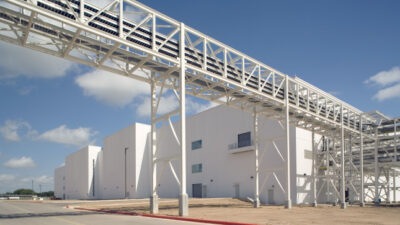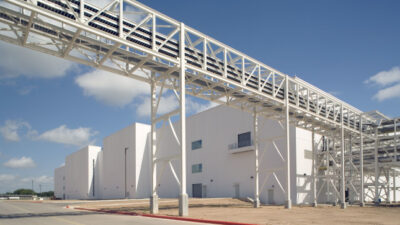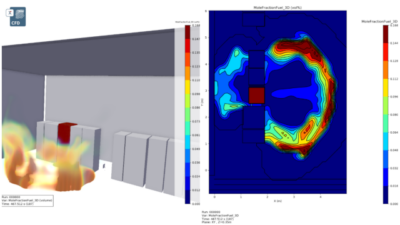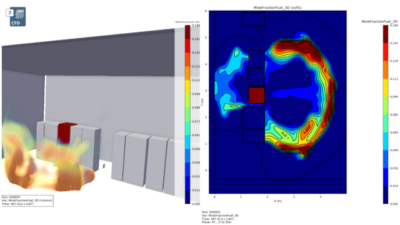Just a month ago a fairly significant anniversary passed without much ado. The specific date was July 7—the one-year anniversary of the London subway bombings. At the time, the event, just after London was named host of the 2012 summer Olympic Games, brought back many of the same insecurities people experienced after 9/11.
But while the anniversary passed under the radar of the average American, it didn’t mean those in the security industry weren’t paying attention. In fact, according to security experts, jurisdictions such as the city of Chicago have been significantly upgrading their protective measures, notably in the realm of closed circuit television (CCTV). This video technology proved key in the subway bombing investigations as it provided a live video feed of the bombers themselves. But in just this past year, according to Bill Sako, president of Sako & Assocs., Chicago, a division of the fire protection design firm RJA, the techology has radically improved. Just a year ago, he said, CCTV video surveillance systems were implemented with traditional analog video that consisted of analog cameras connected via cables to an analog video switching system with video displays and analog video cassette recorders. Today, video surveillance has migrated to the digital domain.
“Digital IP video has just revolutionized our business; it’s incredible,” said Sako.
Around the time of the London bombings, digital IP video, he said, was in its infancy and didn’t have the functionality of analog, such as pan, tilt, zoom and switch. That was then. “In the past year it has been like lightning,” he explained. “We are not designing any video systems today that are analog; it is all digital,” said Sako.
What’s pushing the change? According to Sako’s colleague Lauris Freidenfelds, it’s cost savings, video analytics, situational awareness and functionality. The cost factor is important to anyone looking to install the latest surveillance without additional costs. In the past, with analog and early digital systems, two or three cables were necessary—one for video, another for power and yet another if controls were necessary. Now, one cable can handle it all. Furthermore, because a digital IP camera can be placed across a network, it’s possible to use Power over Ethernet (PoE).
“The migration from analog to digital video has been incredible,” said Sako. “Today, we are able to share the organization’s normal data network or create a separate physical network from the organization’s normal data network and then tie them together at one end.”
But he warned that such integrated systems suck up bandwidth, sometimes mandating a need for a separate security network. In the cases where the people who control the data network are willing to share it, security folks had better expect to throttle back their desires and learn how to better use the video signals they are getting.
“Throttling back,” for the record, is also a technical term, where video is compressed so it can be sent more economically. The problem is that video cannot be sent in full frames. To do so means a separate network must be installed.
But there are advantages of having full-frame video available: video analytics, the second major driver changing security systems. Full-frame video provides better picture quality, meaning parts of it can be manipulated without interfering with the other parts of the full picture—a capability only possible with digital video cameras.
Blowing pictures up in size is now much easier and clearer. “With analog video, what you see is what you get,” said Sako. With digital video, he added, “we can do anything we want to do with it.”
Among the analytic technologies are 360° video and stitching. The former is a camera that has a complete 360° view; the latter undoes the fish-eye look. These functions are important in situations where playback is necessary to see what activities took place in a building at a certain time. More importantly, both of these capabilities allow one camera to do what three or four cameras previously did. This is a major boon in places like museums, hospitals and warehouses.
These developments really excite Freidenfelds. “It’s really about replacing ‘dummy’ security with artificial intelligence,” he said.
For example, video cameras can be programmed with motion detectors as well as alerts and alarms that send red flags to the system control center. If and when someone or something has done something to trigger an alarm, such as leaving a briefcase unattended, security system operators are instantly notified, meaning the system doesn’t have to be so closely monitored by staff.
Not only can security operators automate their video systems to their advantage, but they can also view video in real time because of more advanced compression algorithms. Technology that makes video closer to real time is going to especially benefit programs that enable mobile workforces with the ability to send live video feed over cell phones and PDAs.
This is exactly what the city of Chicago is doing with its Operation Virtual Shield (OVS) program. With real-time video, wireless communications and interoperability possibilities, all emergency units, including fire and police departments, can coordinate. OVS features a network of digital cameras located around the city. All cameras feed to one location, called the situational awareness room. When a problem occurs, operators are able call cameras from anywhere in the city to view the problem and launch the appropriate response. Furthermore, response units have the ability to view building schematics and can communicate over different technologies, be they radio frequencies or wireless, so that fire, police and security can work more efficiently.
Situational awareness is the third major benefit of using digital video in CCTV systems. Video creates and fosters a sense of situational awareness so that, for example, on a college campus, a security guard can see a problem as captured on video, be precisely aware of the entire situation and react properly and immediately.
This is huge, Sako said, because it’s the nature of people, no matter how well-trained, to panic in challenging situations. They feel unaware of every situation that is going on around them, like where the problem is, how it occurred and if people are injured. This is where advanced video shines.
In order to help operators and guards do their jobs and be more situationally aware, a company in Texas implemented a 3D-imaging system that can create an electronic model of an entire building and use all of its video cameras to illuminate the model so that the viewer essentially sees live video of the building.
Additionally, video can be taken from every area in the building. As the screen moves from place to place, the system stitches together images from all cameras, so the person viewing the screen feels as if he or she is flying around on a magic carpet. All areas with video cameras can be viewed from the convenience of one’s own desk chair, all in order to create situational awareness so that personnel know how to respond properly.



